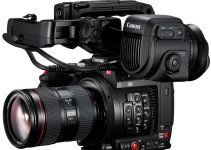Red Digital Cinema cameras started a revolution in the film and video world when they were introduced in 2007. They entered a market that was completely dominated by the old guards at Panasonic, Sony, and Canon who offered nothing comparable to the original Red One.
The features were unheard of, the image quality and size was insane, and the low price left a lot of people’s jaws on the floor. Up to this point, filmmakers were used to paying upwards of $100,000 for a camera package that in some senses were as powerful as a modern day iPhone.
Red made a lot of people fall in love with them back then, and as a market leader today they’re still playing Penelope Pussycat to the eager Pepé Le Pew DPs out there with their top notch tech and great looking images.
But what is it about these Red Cameras that have had so many people falling in love?
Have a look/listen to the mix tape Nick Sales has put together about why he is crazy about his Red Cinema Camera., and remember when the feeling is right, don’t be afraid to dive right in and see where things lead.
Just like anyone in a new romance, I can’t restrain myself from all of the corny analogies and awful jokes I’m about to make about love in reference to this Red Camera overview. The door has been opened, and I’m going to let the light shine in.
Red can largely be credited for inventing digital cinema. Prior to their entrance into the market, filmmakers like George Lucas were absolutely happy to film movies like the Star Wars prequels using Sony HD cameras because it was all that they had available. Die hards planted their feet in the ground and vowed to never shoot digitally – declaring that only celluloid had the quality available for the art of filmmaking.
When Red walked into the room, everyone’s heads turned and attitudes about HD and film started to disappear. Suddenly a technology we assumed was a generation away was sitting right in front of us and everyone was dying to get their hands on it.
Today, we aren’t wanting for choice anymore; there are so many cameras that followed in Red’s footsteps. But with so many fish in the sea, it warms my heart a little that someone took the time to write this love song to their old sweetheart.
Let’s look at the things that make these Red cameras so great and so expensive compared to the competition in a little game of “He/She loves me not…”.
The Resolution
From the start, Red has always been a high-resolution company. Most new computers can’t even play 8K footage, but Red has been making 8K cameras for the last 5 years.
That added bump in quality comes with a lot of advantages.
- Low Light Capabilities
- With so many pixels, you’ll see an increase in low-light capability when you downsample the image to your final resolution for delivery.
- The added noise from shooting in low-light is hidden when downsampling.
- This is certainly true for downsampling, but an imager with fewer pixels and larger photosites can produce even better native resolution low-light images.
- Reframing in Post
- When you film in 8K, you’re filming at a resolution that is 16 times higher quality than HD which offers you the ability to zoom in and reframe in post.
- Though it is nice to have this ability, think about what you’re losing when you give up this level of control as a DP. Composition IS photography. If someone else is recomposing your shots afterward, you are no longer the Director of Photography. You are just a cameraperson.
- More Image Detail
- Filming in 8K means that each and every frame that you shoot is big enough to be printed and displayed on a billboard along the highway without scaling!
- Some professional photographers have used Red cameras to shoot high resolution still images for ad campaigns.
Filming In Raw
When filming with the Red, you can go back in post to adjust exposure and white balance meaning almost nothing is set in stone until you’ve rendered the locked master of your project.
Ok, lots of cameras can film in raw now but Red was the first camera to offer this ability for shooting video and that is actually kind of a negative. Red invented the compressed raw codec and has a very tightly held patent on the technology. This is why we don’t see a flood of cameras and phones that can shoot in ProRes Raw internally.
And although I’d love to see a camera with internal ProRes Raw recording, the lose of this patent would spell out a death rattle for Red and nobody wants that. They’ve been at this for 13 years, and their raw codec arguably offers the best file sizes, color, quality, and latitude.
Variable Frame Rates
Though other cameras that have caught your eye might have had the ability to shoot at high speeds, Red’s cameras offer fully adjustable frame rates. This means that you can film at any speed from 1 FPS to your camera’s max FPS and every possible speed in between.
As Nick explains it, this feature can be very useful in filming a music video. For performances, the song is often played at a slightly faster speed and the band pantomimes the performance to match the speed of the playback. When slowed down in post, this has an otherworldly effect that makes the group really stand out and look like they’re playing in slow motion.
Have a look at the Undone- The Sweater Song video by Weezer as a reference.
Since most cameras vary to a fixed 24, 60, 120, 240 FPS setting, they’re too fast for the musicians to keep up and that makes the effect look a bit weird on top of that.
Slow Motion Capabilities
Red cameras have been well known for their ability to shoot in higher frame rates since the Red One. Sony, Panasonic, and Canon are really just catching up to Red with their higher frame rate capabilities because the quality of the slow motion footage from any Red camera is fantastic.
Unfortunately though sometimes with love there are compromises and higher frame rates on Red cameras have always come with an additional sensor crop which can be substantial. The image quality is still amazing, but you won’t get 240 FPS with a Full Frame sensor read-out.
This isn’t a deal-breaker for me, though, and I think seeing things in a 6K wide crop at 100fps might help me look past it.
Selectable Aspect Ratio
Instead of being stuck in a 16:9 or 4:3 world, you can select whatever aspect ratio you’d like to film in on this Red camera and that’ll be sure to help with all those varying sized web deliverables for ads on Facebook, etc.
Red Color Science
It is undeniable that Red cameras offer fantastic colors and there is also a lot of color information stored in its codec. For me, Canon cameras are able to produce nicer skin tones and obviously, nobody can get close to ARRI’s color, but there is just something about that RED look that is beautiful.
Dynamic Range
Since the inception of the Red One camera, Red has been known for having outstanding dynamic range. On most new Red cameras you can expect about 16.5 stops of dynamic range and Red doesn’t mess with the numbers like other manufacturers do.
There is some misconceptions about Red’s HDRX abilities that I’d think are important to mention. Red is able to capture such high dynamic range by literally capturing two nearly simultaneous exposures. This works well if the camera and subject are mostly stationary but it can have a ghosting effect when things are in motion.
High dynamic range doesn’t mean you should give up on shaping the light in your scenes, or that you can skip past NDing a bright window.
Compression Ratios
In the Red ecosystem, you can film in raw and still have file sizes that won’t fill up all of your hard drives. Red uses a compressed raw system so you can adjust the compression ratio from 2:1 to 22:1. There are a lot of good ratios in the mid-range that offer small data rates and fantastic image quality.
You can not choose your compression ratio on a Canon C200, for example, but on the BMPCC 4k/6k you have this same ability but the range of ratios is smaller and there are very noticeable differences in quality at higher ratios.
Modular Design
When you buy a Red camera, you buy the ‘brain’ of the camera and add the modules and accessories to build out the rig that best suits your needs. The expansion modules in the DSMC2 line let you add features to your camera as you need them rather than selling you an all-in-one that isn’t upgradeable.

Some might this of this as a positive, but I actually see it as a negative and kind of a Red flag as love for Red Digital Cinema goes. *pun intended.
Yes, it’s modular and you can upgrade but the cost of those upgrades is often a lot higher than they would be from a camera that offers V-mount plates, or expanded points as a standard feature in the body. A fully configured Red camera can become astronomically expensive.
In-Camera Proxies
If you’re filming in 8K, things can take a long time on the backend. Just transferring the files can take days depending on how much you’re shooting, and that isn’t factoring in all of the additional time it you’ll spend in post with your computer running sluggishly trying to keep up with all that data.
I always recommend that people create proxies for editing regardless of what you’re shooting. It speeds up the editing time dramatically and makes it possible to work with editors remotely. What is fantastic about Red is that proxies can be created in-camera meaning you can get right to editing while the full resolution media is backed up and processed on another machine.
Red isn’t the only camera that can do this either. It’s also a feature in the Canon C200 and a growing list of other cameras that are hitting the market.
If you’re not editing in proxies, you should be. There is no reason to kill your computer when you’re just sorting things out, and Resolve makes it easy to reconnect the high quality material at the end.
Conclusion
Red really changed the perception of what a professional cinema camera could do. People aren’t shooting on film anymore because of the advancements that they made as a company, but the competition is always hot on their heels and one-by-one these features are finding their way into a new class of lower-cost cameras.
Something new may come by that takes our attention away from Red one day, but you never forget your first love. If you’re thinking about purchasing a Red camera for your business, I say dive-in and see where love takes you.
However, if the cost is too high, go out and try to find a camera that incorporates as many of these and the other features that Red offers. It might be hard to come by, and you might feel alone in a sea of options but eventually the right camera will come along for you. Give love a chance.
[source: Nick Sales]
B&H Order Links:
Disclaimer: As an Amazon Associate partner and participant in B&H and Adorama Affiliate programmes, we earn a small comission from each purchase made through the affiliate links listed above at no additional cost to you.



